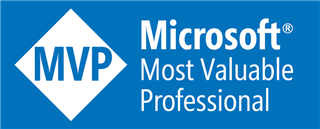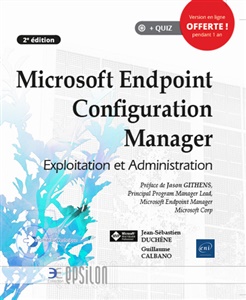L’équipe Microsoft Learning a annoncé quelques semaines auparavant,
le lancement de la phase de beta-testing de la certification relative à Windows
Small Business Server 7.
Aujourd’hui les personnes ayant postulées et mises à jour leur profile SME ont
pu recevoir le code de promotion permettant de s’inscrire au beta-testing de la
certification : 71-169, TS: Windows Small Business Server 7,
Configuring.
Cet examen reprend les notions suivantes :
Installing and Setting Up Windows Small Business Server (SBS) Standard 2011
• Prepare for migration.
o This objective may include but is not limited to: run Windows SBS Best Practice Analyzer (BPA), DNS cleanup, domain cleanup, run preparation tool, create an answer file for migration)
• Install and migrate to Windows SBS Standard 2011.
o This objective may include but is not limited to: from Windows SBS 2003, from Windows SBS 2008, Migration Wizard tasks, configure a new installation of Windows SBS
• Configure connectivity.
o This objective may include but is not limited to: configure Internet domain, configure DNS name resolution (internal and external)
• Configure network infrastructure.
o This objective may include but is not limited to: ports, protocols, inbound or outbound rules, enable outbound popup and logging, install and configure a gateway appliance/firewall for common Windows SBS services, configure and maintain WAN/LAN/NAT for email/web/ActiveSync (e.g., IP addressing, network hardware configuration)
Configuring Remote Access
• Configure remote client access to internal resources.
o This objective may include but is not limited to: VPN
• Configure Remote Web Access
o This objective may include but is not limited to: configure the Windows SBS server, e.g., to admin console, to computers, to shared folders; configure RWW to use Remote Desktop Server server; configure client computers
• Configure Remote Desktop Services (RDS).
o This objective may include but is not limited to: configure RemoteApp applications, configure RD Session Host, RD Web, RD Gateway
Configuring and Managing Messaging and Collaboration
• Configure email.
o This objective may include but is not limited to: Exchange Server, POP3 Connector, configure email client protocols [POP3 (on client side), SMTP, RPC/HTTPS (also known as Outlook Anywhere), IMAP], configure Microsoft Outlook settings, configure a smart host
• Manage Microsoft Exchange Server.
o This objective may include but is not limited to: maintain logging; db management, e.g., defragment db; quota management, add additional email domains, redirect email, configure mobile device Microsoft Exchange ActiveSync
• Configure folder shares.
o This objective may include but is not limited to: using Windows SBS console, using native tools (Quota console, File and Server Resource Manager, file screen, reports), shared folders, SMB permissions vs. NTFS permissions
• Configure storage.
o This objective may include but is not limited to: using Move Data Wizards, add additional storage, configure folder redirection policy
• Configure Microsoft SharePoint
o This objective may include but is not limited to: create and modify SharePoint sites (e.g., new team sites, blog sites, wiki sites), assign user permissions, configure document upload and handling
Managing Users, Computers, and Printers
• Create and manage user accounts.
o This objective may include but is not limited to: create, edit, and delete user accounts, assign permissions to users, assign users to computers, configure user RWW access using Windows SBS console, properties and native tools
• Create and manage user roles.
o This objective may include but is not limited to: change user roles, assign users to a role, assign groups to a role, assign quota policy
• Create and manage groups.
o This objective may include but is not limited to: create a distribution group, create a security group, add/edit/delete users to/from a group, mail enabled vs. not mail enabled; archived vs. not archived, OU structures
• Join computers to the domain.
o This objective may include but is not limited to: client and server computers, join an additional server, Connect Wizard, manage user permissions for domain computers (local admin vs. standard user, remote access), migrate local user profiles
• Create and configure shared devices.
o This objective may include but is not limited to: fax and printers, add a network printer, add drivers for 32 bit, configure user permissions for a device
Managing Health and Security
• Configure Windows Server Update Services (WSUS).
o This objective may include but is not limited to: configure client exclusions, server security updates, maintain health and security, maintain server/client WSUS patching, change software update and schedule settings
• Manage monitoring and reporting.
o This objective may include but is not limited to: client (including update compliancy, client computer firewall, antivirus status), server (including core services; low disk space; success or fail)
• Configure backup and restore data on the server.
• Configure SSL certificates.
o This objective may include but is not limited to: configure a trusted certificate, self-signed certificates, Including manage certificate packages, import and export during setup for migration
La phase d’inscription prendra fin lorsque le quota de beta-testeur
aura été atteint. N'attendez pas ...
La période de passage aura lieu du 22 Décembre au 14 janvier 2010.
Enfin le code de promotion est : SBSS
Rendez-vous sur le site de prometric pour vous inscrire. Bon Courage !
Plus d'informations sur cet examen : http://www.microsoft.com/learning/en/us/exam.aspx?ID=70-169#tab2



